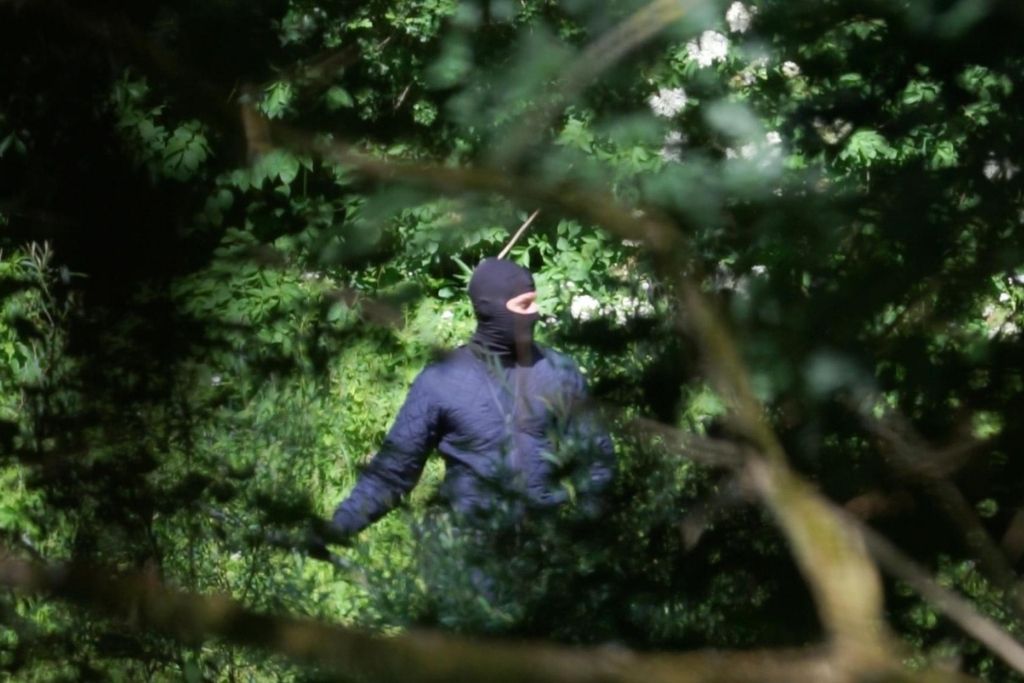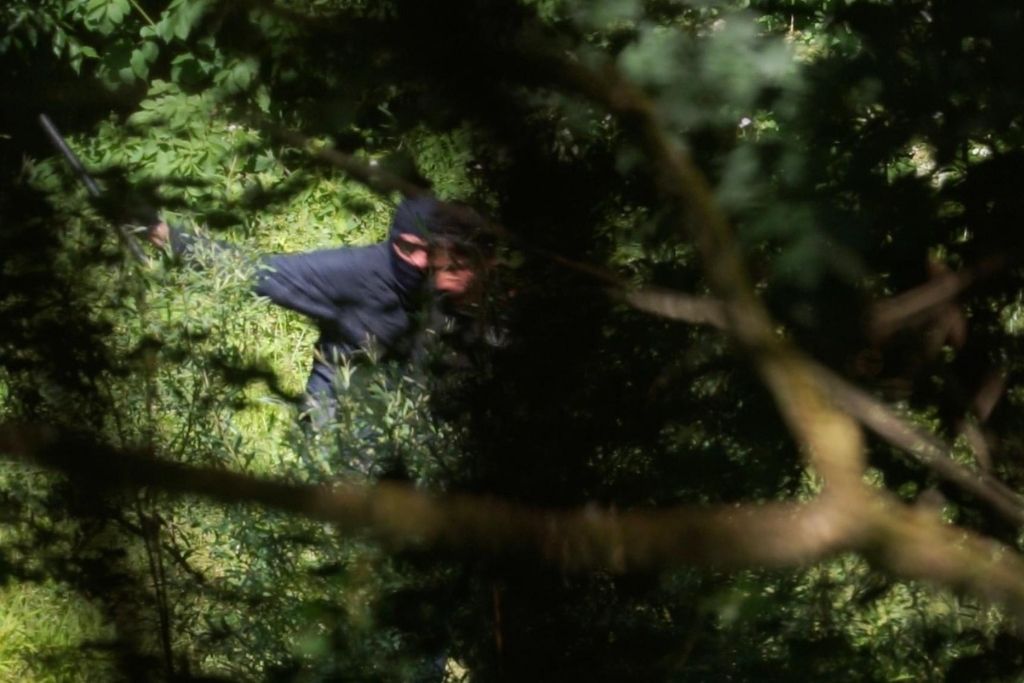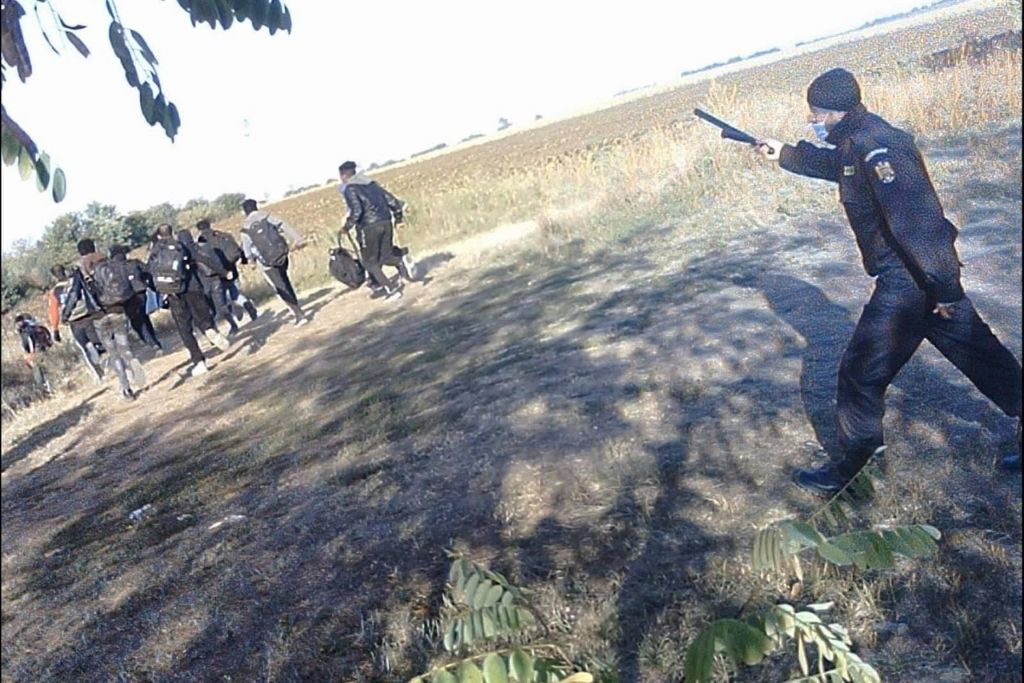Unmasking Europe’s Shadow Armies
Shocking evidence links violence against asylum seekers in EU to state security
The hardest edge of Europe’s migration policy is encountered on land and at sea in the form of masked men. Their violent actions against vulnerable people on the move, often seeking international protection, are far removed from discussions on managed migration in Brussels, Berlin or Warsaw.
From the forests of the Western Balkans to the Aegean Sea consistent reports have emerged of physical assaults, illegal pushbacks, reckless endangerment and rights abuses of asylum seekers and migrants. But the masked men operate in a grey zone of deniability which considerable efforts by activists and other civil society actors have only been able to partially penetrate. It is a thin veil that most informed observers can already see through but it has provided sufficient cover for the perpetrators to escape any meaningful accountability.
While these forces remain, in effect, shadow armies it prevents any detailed examination of how they are equipped and financed from either national or European Union budgets. Thousands of personal testimonies from people caught up in these often violent operations have been unable to shift official denials that they occur. What has been needed is irrefutable visual evidence and corroboration from confidential sources among the same officer corps — some of whom are unhappy with being ordered to undertake these actions.
But these border areas have in recent years become hostile environments for reporting with restricted access and multiple instances of arrests of local and international journalists who have tried to approach and observe what is happening.
Lighthouse Reports led a joint investigation with Der Spiegel, SRF, Rundschau, ARD Monitor, ARD Studio Wien, Libération, RTL Croatia, Novosti and Pointer, spent eight months gathering testimony, tracing chains of command, tracking social media and satellite imagery and following the money trails back to EU funds. The visual evidence was corroborated by interviews with more than a dozen serving and former police and coast guard officers, as well as witness accounts by pushback victims across the three EU countries.
What emerges is the most detailed picture yet of a previously deniable campaign of illegal, violent pushbacks in Croatia, Greece and Romania by masked men whose uniforms have been stripped of any identifying details.
EU governments deny the existence of a violent campaign by masked men to turn away asylum seekers at EU borders. A months-long investigation by @LHReports & leading media unmasks these groups, reveals who commands & finances them pic.twitter.com/nGNFs5Epsi
— Lighthouse Reports (@LHreports) October 6, 2021
METHODS
In Croatia, Lighthouse Reports captured the first ever high resolution footage of a violent pushback at the border with Bosnia Herzegovina. Different teams of journalists went to the border region to build up a network of local sources with detailed knowledge of the area to identify the exact places where these pushbacks were happening. The team then spent weeks in the forests with powerful lenses and a drone. They were able to capture 11 pushbacks on camera at five different locations along the border.
Forensic examination of one video showing a violent pushback revealed that the masked men had equipment and uniforms consistent with the Croatian police’s riot control branch, called the Intervention Police. Three of the four police officers are using a so-called Tonfa, a baton that is only issued to the Intervention Police.
We used a drone inside BiH territory to film another pushback and were able to interview some of the 15 asylum seekers, mostly Afghans, directly after the pushback to confirm they were actively seeking international protection in Croatia.
Croatia uses EU funds to finance these border operations. Based on documents in the EU’s tender database, we know that the costs for the jackets, accommodation and per diems for the officers are paid out of the EU’s Internal Security Fund (ISF).
In both Croatia and Romania we also made use of remote cameras, typically used by hunters, to capture footage of people being pushed back. The videos were supported by testimony from people who had been summarily expelled who also reported serious assaults during the pushbacks.
In Greece, we collected and analysed 635 videos of alleged pushbacks in the Aegean, at least 15 of them showing masked men in action, which were reviewed by current and former senior officers in the Greek coastguard.
STORYLINES
In Croatia, our investigators captured the first ever high resolution footage of a violent pushback at the border with Bosnia Herzegovina. Forensic examination of the video revealed that the men had equipment and uniforms consistent with a branch of the Croatian police, as documented by Pointer and the Croatian media RTL and Novosti. Germany’s ARD interviewed whistleblowers from that same force, known as the Intervention Police, who said that these actions were part of a national operation codenamed “Koridor” that is part financed by EU funds.
The impact of these actions against people who are seeking international protection are shown by the Swiss TV-programme Rundschau which covers the story of Nazila, a 16-year old girl from Afghanistan who has been a refugee all her life. She has tried three times to cross the border and claim asylum, being pushed back each time.
In Romania, we captured for the first time how Romanian police units are pushing people back to Serbia. The videos, published by Libération, were supported by testimony from people who had been summarily expelled who also reported serious assaults during these same incidents captured on film.
In Greece, video footage obtained from open sources shows masked men conducting pushbacks on the high seas. When reviewed by current and former senior officers in the Greek coastguard, reports Der Spiegel, they were able to identify the masked men as members of elite Greek coast guard units: the Underwater Operations (MYA) and Special Operations (KEA) and (OEA).
Thanks to Maltego who offered us a free Maltego Pro license as part of their “Maltego Academic and Non-Profit Program”.
And thanks to Social Links who offered us considerable discount on Social Links Pro transforms. Both products were extensively used for investigating and analyzing social media content related to this investigation.
To keep up to date with Lighthouse investigations sign up for our monthly newsletter
The Impact
Our investigations don’t end when we publish a story with media partners. Reaching big public audiences is an important step but these investigations have an after life which we both track and take part in. Our work can lead to swift results from court cases to resignations, it can also have a slow-burn impact from public campaigns to political debates or community actions. Where appropriate we want to be part of the conversations that investigative journalism contributes to and to make a difference on the topics we cover. Check back here in the coming months for an update on how this work is having an impact.




